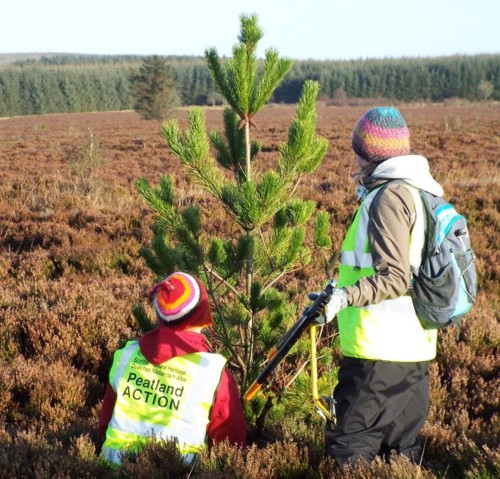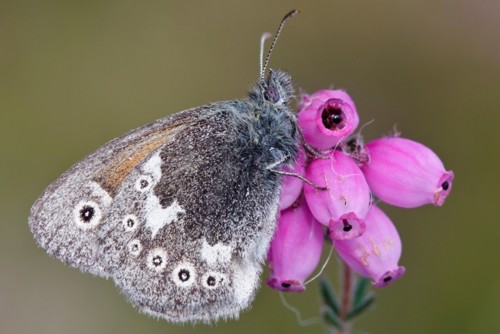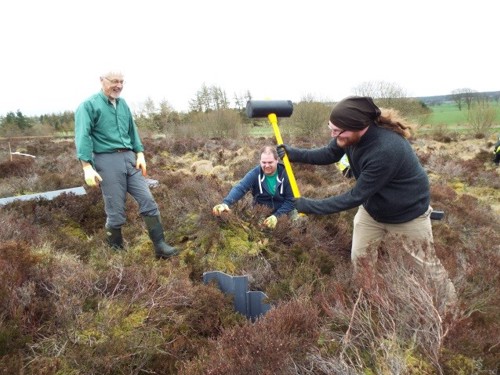Butterfly Conservation Scotland’s ‘Bog Squad’ team is a volunteer task force, created to carry out rehabilitation works on damaged peatlands across Scotland with funding from NatureScot’s led-Peatland ACTION project. David Hill, Peatland Restoration Project Officer tells us more.
David Hill, Peatland Restoration Project officer
March 15, 2019

Bog Squad volunteers at Langlands Moss (© Sara Green/Butterfly Conservation)
Scotland peatlands range from large blanket bogs in the highlands and islands to small fragments of bogs located amongst the agricultural lowlands. Many of these peatlands have been left damaged by attempts at drainage for forestry and agricultural purposes. This has resulted in lower water tables making the peat susceptible to drying, which not only releases precious carbon into the atmosphere, but also threatens the specialised flora and fauna that thrive on the wet and boggy surface.
Scotland’s lowland bogs are home to the Large Heath, Britain’s only peatland specialist butterfly. Dwarf shrubs on peatlands such as heather and blaeberry also provide habitat for a range of scarce butterfly and moth species. In addition, many lowland bogs are fringed by woodland which provides habitat for many species of moth and butterfly including the increasingly rare Small Pearl-bordered Fritillary butterfly. All these species are dependent on good quality peatlands to provide habitat for them. And this is where the Bog Squad comes in……

Large Heath butterfly (© Alistair Graham/Butterfly Conservation)
Since 2014, Bog Squad volunteers have been working hard to improve the fortunes of our lowland peatlands. They create drainage ditch-blocking dams by using sheets of plastic driven down with rubber mallets. This helps raise the water table and keeps the peat hydrated. Small pools of open water are often formed behind the dams providing habitat for dragonflies and other aquatic fauna.

Volunteers installing plastic dam (© David Hill/Butterfly Conservation)
Over time the ditches fill up with sphagnum mosses whose decaying remains drive the peat formation process and the ditch returns to its boggy origins. Bog Squad volunteers also help by removing encroaching scrub from bogs. Scrub and developing trees intercept water and increase evaporation causing the bog surface to further dry out.

Volunteers cutting scrub (© David Hill/Butterfly Conservation)
Get involved
If you are interested in getting involved with the Bog Squad project, please see our blog which features regular updates on our work and details of upcoming work parties: http://bogsquad.weebly.com/ or contact David Hill at dhill@butterfly-conservation.org
Project Finder: Get Involved - Bog Squad
Adobe Acrobat Reader is the free, trusted leader for reliably viewing, annotating and signing PDFs.
Download Adobe Acrobat Reader




